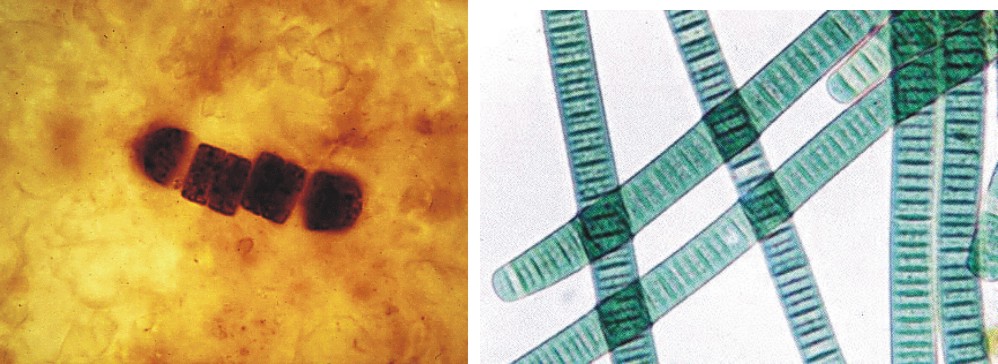Life in Precambrian Time
Precambrian Time is the unit of time that begins with the formation of the Earth (4.6 billion years ago) and ends with the first appearance of life (542 million years ago). This emerging life consisted primarily of single-celled organisms, simple multi-celled organisms like sponges and algae, and soft-bodied invertebrates (i.e., animals without backbones). Precambrian Time is further subdivided into smaller time units based on the abundance of certain types of fossils.
Fossils from this time period are fairly rare for two reasons. Precambrian life-forms were soft-bodied. They did not possess the hard body parts that were necessary for good fossil formation. Also, the extreme age of rocks of this time period makes it very likely that they have undergone extensive geologic processes resulting in the destruction of any existing fossils.
Precambrian Tectonics
Due to the extreme age of Precambrian rocks, knowledge of plate movement in Precambrian Time is not exact. It is believed that a gigantic supercontinent called Rodinia, the Earth’s first supercontinent, existed about one billion years ago. Rodinia straddled the equator and had the landmass called Laurentia, the ancient core of the future North American continent, at its center. It is believed that Rodinia began to fragment, and then broke apart into smaller landmasses between 750–600 million years ago.
View the movements of the landmasses that made up Rodinia:
- Late Precambrian - 600 million years ago
- Latest Precambrian - 560 million years ago
The oldest known fossils are those of oxygen-producing blue-green algae known as cyanobacteria. Cyanobacteria are believed to have been responsible for producing large quantities of oxygen, thereby changing the composition of the Earth’s atmosphere in its early history. Fossils of cyanobacteria up to 3.5 billion years old have been found in the rock formation known as the Bitter Springs Formation near the town of Alice Springs in central Australia.
A comparison of 850-million-year-old cyanobacteria on the left with modern cyanobacteria on the right.

